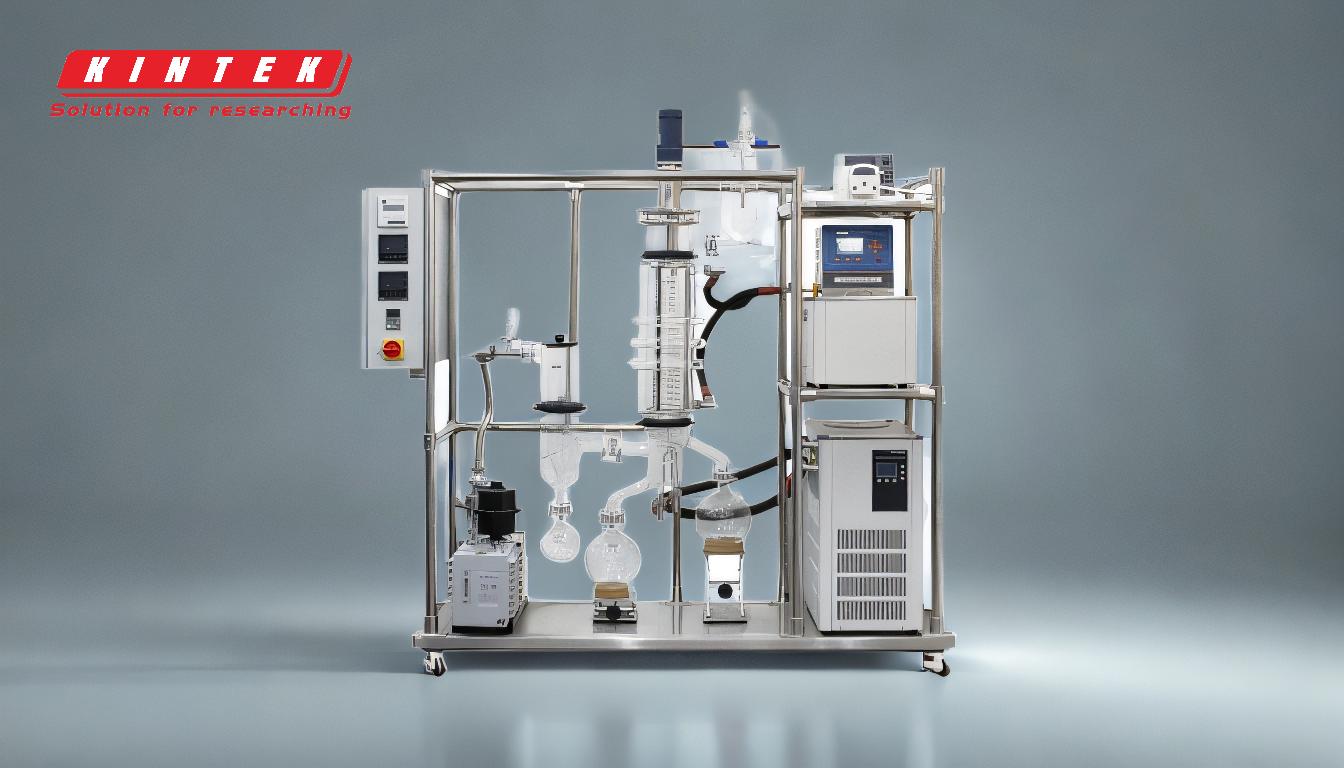Molecular distillation and vacuum distillation are related but not the same. Both processes operate under reduced pressure, but molecular distillation is a specialized form of vacuum distillation that relies on molecular dynamics rather than fluid dynamics. Molecular distillation is performed under extremely high vacuum, allowing for the separation of molecules based on their mean free path rather than boiling points alone. This method is particularly useful for heat-sensitive, high molecular weight materials, as it prevents oxidation and thermal degradation. While vacuum distillation is a broader term that includes various techniques operating under reduced pressure, molecular distillation is a specific, advanced technique with unique applications and advantages.
Key Points Explained:

-
Operating Pressure and Environment:
- Molecular Distillation: Operates under an extremely high vacuum, where the gaseous phase exerts negligible pressure on the substance being evaporated. This allows for separation at temperatures below the boiling points of the materials, preventing thermal degradation.
- Vacuum Distillation: Operates under reduced pressure but not necessarily at the extreme vacuum levels of molecular distillation. It is a broader category that includes various techniques, such as short-path distillation, which may not achieve the same level of separation as molecular distillation.
-
Mechanism of Separation:
- Molecular Distillation: Relies on molecular dynamics rather than fluid dynamics. The process involves creating a thin film of the substance on a heated surface, where molecules evaporate and travel a short distance to a cold surface without intermolecular collisions. Separation is based on the mean free path of molecules.
- Vacuum Distillation: Typically relies on boiling points and fluid dynamics. The substance is heated to form a vapor, which then condenses at different points in the distillation column based on temperature gradients.
-
Applications and Suitability:
- Molecular Distillation: Ideal for heat-sensitive, high molecular weight materials, such as essential oils, natural products, and pharmaceuticals. It is particularly useful for substances that are difficult to separate using conventional methods due to their sensitivity to heat or oxidation.
- Vacuum Distillation: More commonly used for separating liquids with close boiling points, such as in the petrochemical industry. It is less specialized and can be applied to a wider range of materials, though it may not be as effective for heat-sensitive compounds.
-
Efficiency and Energy Consumption:
- Molecular Distillation: Achieves a higher degree of separation for difficult-to-separate substances but is generally less efficient in terms of throughput and more time-consuming. It has lower energy consumption due to its unique design and low internal resistance.
- Vacuum Distillation: Generally more efficient in terms of throughput and time, but may require more energy depending on the specific technique and materials being processed.
-
Structural Design:
- Molecular Distillation: Features a short-path design with a minimal distance between the heated and cold surfaces. This design minimizes the chance of intermolecular collisions and ensures that molecules travel directly from the hot to the cold surface.
- Vacuum Distillation: May involve longer distillation columns or more complex setups, depending on the specific technique. The design is often optimized for maximizing surface area and temperature gradients rather than minimizing the path length.
-
Prevention of Oxidation and Thermal Damage:
- Molecular Distillation: The high vacuum and low operating temperatures prevent oxidation and thermal degradation, making it suitable for sensitive materials.
- Vacuum Distillation: While it also reduces the risk of oxidation compared to atmospheric distillation, it may not offer the same level of protection as molecular distillation, especially for highly sensitive compounds.
In summary, while both molecular distillation and vacuum distillation operate under reduced pressure, molecular distillation is a more specialized and advanced technique that leverages molecular dynamics and extreme vacuum conditions to separate heat-sensitive, high molecular weight materials. Vacuum distillation, on the other hand, is a broader category that includes various techniques and is generally more versatile but less specialized.
Summary Table:
| Aspect | Molecular Distillation | Vacuum Distillation |
|---|---|---|
| Operating Pressure | Extremely high vacuum | Reduced pressure (not as extreme) |
| Mechanism of Separation | Molecular dynamics (mean free path) | Fluid dynamics (boiling points) |
| Applications | Heat-sensitive, high molecular weight materials (e.g., pharmaceuticals, essential oils) | Liquids with close boiling points (e.g., petrochemicals) |
| Efficiency | Higher separation for difficult materials, lower throughput | Higher throughput, more time-efficient |
| Energy Consumption | Lower energy consumption | May require more energy |
| Structural Design | Short-path design, minimal distance between surfaces | Longer columns, optimized for surface area and temperature gradients |
| Oxidation Prevention | High vacuum prevents oxidation and thermal degradation | Reduced oxidation risk, but less effective for sensitive compounds |
Need help choosing the right distillation method for your application? Contact our experts today!










